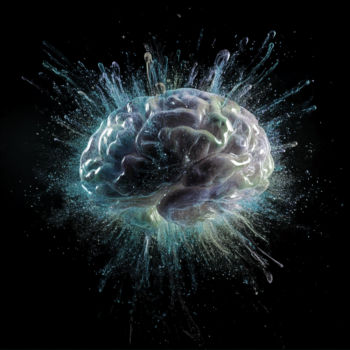
Part 1: Foundations of AI and Product Management
Summary
Artificial Intelligence (AI) is revolutionizing knowledge-worker professions like product management, promising to boost productivity by 40% and improve work quality by 25% according to Noy and Zhang (2023). This series explores AI’s impact on product management, its practical applications, and how to navigate this evolving landscape safely and effectively.
Introduction
Imagine supercharging your productivity and significantly enhancing your work quality. This isn’t a distant dream—it’s the reality that Artificial Intelligence (AI) is bringing to knowledge work industries like product management. So, what does this AI revolution really mean for you as a product manager?
In this three-part series, we’ll explore:
- The foundations of AI and its impact on product management
- How AI can be helpful at each stage of the product lifecycle
- The future of AI interaction and essential safety considerations
Let’s explore the world of AI and discover what it means for you as a product manager.
What is Artificial Intelligence?
“Artificial Intelligence (AI) refers to technology that enables machines and computers to simulate human intelligence and problem-solving capabilities.”
Types of AI
AI is a vast and complex field that encompasses much more than we might initially think. Let’s look at some of the common areas of AI:
- Expert Systems: Rule-based AI for specific domains, commonly used in medical diagnosis and financial planning.
- Machine Learning (ML): Algorithms that improve through experience, powering recommendation systems and image recognition.
- Deep Learning: A subset of ML using neural networks, driving breakthroughs in natural language processing and computer vision.
- Natural Language Processing (NLP): Enables machines to understand and generate human language, used in chatbots and language translation.
- Computer Vision: Allows machines to interpret visual information, crucial for facial recognition and autonomous vehicles.
- Robotics: Combines AI with physical machines, used in manufacturing and healthcare.
- Reinforcement Learning: AI learns through trial and error, vital for game-playing AI and optimizing business processes.
- Generative AI: Creates new content like text, images, video, and audio, powered by large language models (LLMs).
The Evolution of AI
AI has been evolving for over 70 years and is a wide-ranging field with a longer history than many realize. Recent milestones, particularly since OpenAI released its chat-based GPT model in November 2022, have accelerated AI’s potential and practical applications. What once seemed like science fiction is now becoming reality.

Figure 1 – A timeline of AI developments from 1950 to 2024
“With AI models becoming more sophisticated and capable, what once seemed like science fiction is now a reality.”
The Multimodal Future of AI
Modern AI models are increasingly multimodal, meaning they can understand and process voice, text, images, and videos directly. This leap in capability was demonstrated in an OpenAI demo where the model could quickly respond to spoken and visual information, showcasing the advanced nature of these systems.

Figure 2 – A diagram illustrating the multi-modal input and output of AI systems
How to think about AI and product management
To give you a clear mental model, we can consider two main aspects of AI in product management:
- AI for your Product – Enabling and enhancing your product
- AI for Product Managers – To boost productivity and efficiency in your role
We’ll explore both aspects in this series, with a particular focus on AI for Product Managers.
AI for your Product: Enabling and enhancing your product
There are countless potential applications for AI across various industries. Here, we’ve identified six key areas for illustration:
- Finance: Enhanced fraud detection and prevention; Credit scoring models; Customer service and chatbots.
- Manufacturing: Autonomous machines and robots perform tasks like warehouse management using reinforcement learning and machine learning.
- Healthcare: The NHS in the UK is investing £21 million across the country to improve lung cancer detection using AI to analyze medical images.
- Retail: Personalized shopping experiences; Inventory management and supply chain optimization.
- Transportation: AI is being used to optimize routes, predict maintenance needs, and enables autonomous vehicles.
- Marketing: Customer segmentation and targeting; Content and campaign creation and optimization.
Essentially, if you have good quality training data (from your product or business) that defines what “good” looks like and what differs from that standard, you can train an AI.

Figure 3 – Diagram illustrating some AI applications across industries
The applications for AI to enhance your product or service are virtually limitless. The primary consideration now is edging toward cost-effectiveness: Is it more efficient to employ a human or train an AI for a given job? This shift might feel unsettling, and you’re not alone in thinking so.
“The primary consideration may be cost-effectiveness: Is it cheaper to employ a human or train an AI for a given job?”
Understanding the Fundamentals of Product Management
While AI is a powerful tool that Product Managers can harness for improved productivity, it’s crucial to remember that it’s just that—a tool.
To use AI effectively, you need to understand both the tool itself and the craft of product management. After all, how will you know if the AI-generated product management output is correct if you don’t understand product management fundamentals?
The answer is clear: you need a solid grounding in product management principles to confidently and effectively use AI tools and understand their output in your workflow.

Figure 4 – The importance of understanding product management fundamentals when using AI
Key Takeaways
- AI is a broad field with various applications in product management
- Multimodal AI is pushing the boundaries of human-computer interaction
- Understanding product management fundamentals is crucial for effective AI use
In the next part of our series, we’ll explore how AI can enhance each stage of the product lifecycle, from gaining initial insights to launching your product.
Learn more
This blog series (part 1, part 2, part 3) illustrates some important lessons from our webinar with Cyril Le Roux, a Product Focus Senior Consultant. He has over 20 years of product management experience, mainly across Telecoms, eCommerce, Marketplaces (in real estate, trades, and print on demand), and FinTech.
Don’t forget to register for free, to receive access to the Product Focus Toolbox – get access to an online curated library of world class resources for product managers: whitepapers, infographics, journals, and more…
Ideas and feedback?
Please let us know how you’re using AI in your product or product management activities – what’s working, what’s a challenge and where are you finding success?


Join the conversation - 2 replies
Absolutely spot on!
AI is becoming a game-changer for product managers — not just for automation, but for making smarter, data-driven decisions.
From understanding user behavior through predictive analytics to streamlining A/B testing and personalizing user experiences, AI is amplifying strategic thinking and execution.
Understanding how to use AI as a powerful partner in product development rather than as a substitute is essential.
Thank you for the thoughtful comment! We completely agree — AI’s true potential lies in enhancing the product manager’s toolkit, not replacing it.
If you’re interested in diving deeper into how to practically apply AI tools in your role, you might enjoy our AI-Powered Product Management training course. It’s designed to help product professionals harness AI effectively in their day-to-day work. You can find out more here: AI-Powered Product Management.